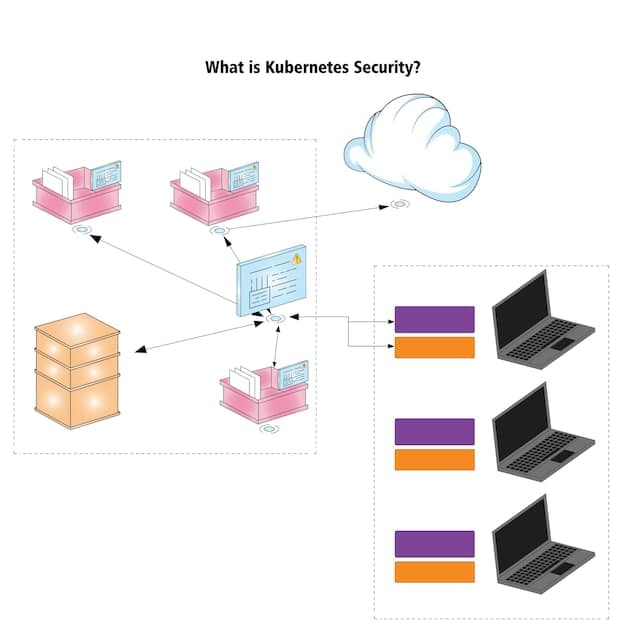Cloud Compliance in the US: Regulations to Watch in 2025

Cloud Compliance in the US: Navigating Regulations in 2025 involves understanding and adhering to evolving legal and industry standards for data security and privacy when using cloud computing services, a critical aspect for businesses operating in the United States.
Ensuring cloud compliance in the US: navigating regulations in 2025 is paramount for businesses leveraging cloud technology. Staying ahead of regulatory changes is crucial for maintaining data security, privacy, and avoiding potential legal repercussions.
Understanding the Evolving Landscape of Cloud Compliance
The landscape of cloud compliance is dynamic, especially in the United States, with regulations constantly evolving to address new technological advancements and data privacy concerns. Understanding these regulations is the first step towards achieving and maintaining compliance.
Several factors contribute to the changing nature of cloud compliance, including:
- Increased awareness of data privacy rights among consumers.
- Growing sophistication of cyber threats targeting cloud infrastructure.
- The introduction of new laws and amendments to existing regulations.
Keeping abreast of these changes requires continuous monitoring and adaptation of compliance strategies.
Key Federal Regulations Impacting Cloud Compliance
Several federal regulations significantly impact cloud compliance for businesses operating in the US. These regulations cover various aspects of data management, security, and privacy, and businesses must align their cloud practices accordingly.
Here are some of the most important federal regulations to consider:
Health Insurance Portability and Accountability Act (HIPAA)
HIPAA sets the standard for protecting sensitive patient data. Cloud providers and healthcare organizations must ensure that all protected health information (PHI) stored or processed in the cloud complies with HIPAA security and privacy rules.
Sarbanes-Oxley Act (SOX)
SOX requires publicly traded companies to maintain accurate and reliable financial reporting. This extends to cloud environments where financial data is stored or processed, necessitating strict controls over data access and integrity. Companies must ensure their cloud providers offer the necessary tools and processes to meet SOX requirements.

Complying with these federal regulations is not merely a legal requirement but also a business imperative. Failure to do so can result in hefty fines, reputational damage, and loss of customer trust.
State-Level Data Privacy Laws and Their Cloud Implications
In addition to federal regulations, businesses operating in the US must also navigate a complex web of state-level data privacy laws. These laws vary significantly from state to state, adding another layer of complexity to cloud compliance efforts.
Some notable state-level data privacy laws include:
- California Consumer Privacy Act (CCPA): Grants California residents broad rights over their personal data, including the right to know, the right to delete, and the right to opt-out of the sale of their personal information.
- New York SHIELD Act: Requires businesses that process the private information of New York residents to implement reasonable data security safeguards.
- Virginia Consumer Data Protection Act (CDPA): Similar to CCPA, CDPA provides Virginia residents with rights related to their personal data, including the right to access, correct, and delete their data.
Businesses must understand the specific requirements of each state law that applies to them and ensure their cloud practices align accordingly. This may involve implementing data localization measures, providing transparency to consumers, and complying with data subject requests.
Best Practices for Achieving Cloud Compliance in 2025
Achieving cloud compliance requires a comprehensive approach that encompasses technical, organizational, and legal considerations. By implementing best practices, businesses can minimize their compliance risks and maintain a secure and compliant cloud environment.
Here are some key best practices for achieving cloud compliance in 2025:
Implement Strong Data Encryption
Encrypting data both in transit and at rest is crucial for protecting sensitive information from unauthorized access. Use strong encryption algorithms and manage encryption keys securely.
Establish Robust Access Controls
Implement a least privilege access model, granting users only the minimum level of access necessary to perform their job duties. Regularly review and update access controls to reflect changes in roles and responsibilities.
Conduct Regular Security Audits
Perform regular security audits to identify vulnerabilities and weaknesses in your cloud infrastructure. Engage third-party auditors to provide an independent assessment of your security posture.

By implementing these best practices, businesses can create a strong foundation for cloud compliance and mitigate the risks associated with data security and privacy.
The Role of Cloud Service Providers in Compliance
Cloud service providers (CSPs) play a critical role in helping businesses achieve and maintain cloud compliance. While businesses are ultimately responsible for compliance, CSPs can provide the tools, services, and expertise needed to meet regulatory requirements.
When selecting a CSP, consider the following factors:
- Compliance certifications: Look for CSPs that have achieved relevant compliance certifications, such as SOC 2, ISO 27001, and HIPAA.
- Data residency options: Ensure the CSP offers data residency options that meet your specific regulatory requirements.
- Security features: Evaluate the CSP’s security features, including encryption, access controls, and intrusion detection systems.
- Incident response capabilities: Assess the CSP’s incident response capabilities and their ability to quickly detect and respond to security incidents.
By partnering with a reputable and compliance-focused CSP, businesses can offload some of the burden of compliance and focus on their core competencies.
Preparing for Future Regulatory Changes
The regulatory landscape is constantly evolving, and businesses must be proactive in preparing for future changes. This involves staying informed about emerging regulations, monitoring industry trends, and adapting compliance strategies accordingly.
Here are some steps businesses can take to prepare for future regulatory changes:
Monitor Regulatory Developments
Subscribe to industry newsletters, attend webinars, and engage with regulatory bodies to stay informed about emerging regulations and compliance requirements.
Conduct Gap Assessments
Regularly conduct gap assessments to identify areas where your current compliance practices fall short of emerging regulations.
Update Compliance Policies
Update your compliance policies and procedures to reflect changes in regulations and best practices.
By staying proactive and adaptable, businesses can navigate the changing regulatory landscape and maintain cloud compliance in the long term. This will ensure that they are able to protect their data, respect customer privacy, and maintain a competitive edge in the market.
| Key Aspect | Brief Description |
|---|---|
| 🔐 Data Encryption | Protect sensitive data using strong encryption methods both in transit and at rest. |
| 🛡️ Access Controls | Implement strict access controls to ensure only authorized personnel can access specific data areas. |
| 📊 Regular Audits | Conduct routine audits to find vulnerabilities and weaknesses in your cloud framework. |
| 📜 Policy Updates | Keep compliance policies updated in response to regulatory change and industry best practices. |
Frequently Asked Questions
▼
Cloud compliance refers to adhering to relevant laws, regulations, and standards when using cloud computing services. This ensures data security and privacy, aligning with legal requirements.
▼
Cloud compliance is vital for protecting sensitive customer data, maintaining trust, and avoiding legal penalties. Non-compliance can result in significant financial and reputational damage.
▼
Key regulations include HIPAA for healthcare, SOX for financial reporting, and various state-level data privacy laws such as CCPA and CDPA that impact how personal data is processed in the cloud.
▼
Businesses can achieve cloud compliance by implementing data encryption, strong access controls, and conducting regular security audits. Staying informed about future regulatory changes is also key.
▼
Cloud service providers offer necessary tools, compliance certifications, and expertise to help businesses meet regulatory requirements. Choosing a provider with robust security features is essential.
Conclusion
Navigating cloud compliance in the US: navigating regulations in 2025 requires a proactive and informed approach. By understanding the evolving regulatory landscape, implementing best practices, and partnering with reputable cloud service providers, businesses can maintain compliance and safeguard their data in the cloud.





